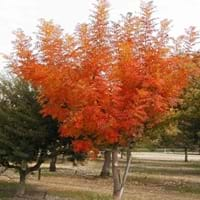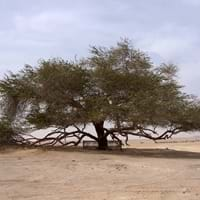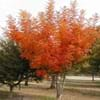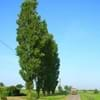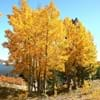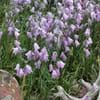Life Span
Perennial
Perennial
Origin
China
Southwestern United States
Types
Not Available
Prosopis chilensis, Prosopis juliflora
Number of Varieties
Not Available
Habitat
Mountains, Rocky areas
Desert, Dry areas
USDA Hardiness Zone
6-9
6-9
Sunset Zone
4, 5, 6, 7, 8, 9, 10, 11, 12, 13, 14, 15, 16, 17, 18, 19, 20, 21, 22, 23
Not Available
Habit
Oval or Rounded
Arching/Fountain-shaped
Flower Color
Red, Green
Yellow
Flower Color Modifier
Bicolor
Bicolor
Fruit Color
Red, Blue, Green, Dark Blue, Black
Tan
Leaf Color in Spring
Green, Light Green
Blue Green
Leaf Color in Summer
Green, Dark Green
Blue Green
Leaf Color in Fall
Red, Orange, Pink
Blue Green
Leaf Color in Winter
Not Available
Not Available
Leaf Shape
Pinnate
Compound
Plant Season
Summer, Fall
Spring
Sunlight
Full Sun, Partial Sun
Full Sun
Type of Soil
Clay, Loam, Sand
Clay, Loam, Sand
The pH of Soil
Acidic, Neutral, Alkaline
Acidic, Neutral, Alkaline
Soil Drainage
Well drained
Well drained
Bloom Time
Early Spring, Spring
Spring
Tolerances
Pollution, Drought, Soil Compaction
Drought, Salt
Where to Plant?
Ground
Ground
How to Plant?
Divison, Seedlings, Stem Planting, Transplanting
Grafting, Seedlings
Plant Maintenance
Medium
Medium
Watering Requirements
Average Water Needs, Water once every two or three weeks, Water when top layer of soil becomes dry
Keep ground moist
In Summer
Lots of watering
Ample Water
In Spring
Moderate
Moderate
In Winter
Average Water
Ample Water
Soil pH
Acidic, Neutral, Alkaline
Acidic, Neutral, Alkaline
Soil Type
Clay, Loam, Sand
Clay, Loam, Sand
Soil Drainage Capacity
Well drained
Well drained
Sun Exposure
Full Sun, Partial Sun
Full Sun
Pruning
Remove damaged leaves, Remove dead branches, Remove dead leaves
Prune in early spring, Remove all watersprouts, Remove dead leaves
Fertilizers
All-Purpose Liquid Fertilizer
Use nitrogen rich soil
Pests and Diseases
Insects, Red blotch, Rodent
Armored scales, Candidula scale, Flatheaded borers, Mealybugs, Mesquite girdler, Mesquite scale, Oldman longhorn, Roundheaded borers, Stem gall rust
Plant Tolerance
Drought, Frost
Drought, Salt
Flowers
Insignificant
Showy
Flower Petal Number
Not Available
Not Available
Fragrant Bark/Stem
No
Yes
Foliage Texture
Medium
Fine
Foliage Sheen
Glossy
Matte
Invasive
Sometimes
Sometimes
Allergy
no allergic reactions
Asthma, Rhinitis
Aesthetic Uses
Beautification, Landscape Designing, Showy Purposes
Not Used For Aesthetic Purpose
Beauty Benefits
Not Available
Improve hair condition
Environmental Uses
Air purification
Air purification
Medicinal Uses
No Medicinal Use
Conjuctivitis, Emetic, Eye Problems, Headache, Laxative, Pain in gums, Stomach aliments, Sunburn
Part of Plant Used
Seeds, Stem
Inner Bark, Leaves, Sap
Other Uses
Application in Furniture, Decoration Purposes, Showy Purposes, Used in biomass, Used in Furniture
Used as a dye, Used As Food, Used for its medicinal properties, Wood is used for making furniture
Used As Indoor Plant
No
No
Used As Outdoor Plant
Yes
Yes
Garden Design
Shade Trees, Street Trees
Shade Trees, Street Trees
Botanical Name
PISTACIA chinensis
PROSOPIS glandulosa
Common Name
Chinese Mastic, Chinese Pistachio
Mesquite
In Hindi
चीनी पिस्ता
उत्तर पश्चिमी अमरीका का एक फलीदार पेड
In German
chinesische Pistazie
Mesquite
In French
pistache chinois
Mesquite
In Spanish
pistacho chino
mezquite
In Greek
Κινέζοι Φιστίκι
Είδος μιμόζας
In Portuguese
Pistache chinês
Mesquite
In Polish
Chiński Pistacje
Mesquite
In Latin
LENTISCUS Chinese
Mesquite
Phylum
Magnoliophyta
Magnoliophyta
Class
Magnoliopsida
Magnoliopsida
Family
Anacardiaceae
Fabaceae
Clade
Angiosperms, Eudicots, Rosids
Angiosperms, Eudicots, Rosids
Tribe
Rhoeae
Not Available
Subfamily
Not Available
Not Available
Number of Species
Not Available
Not Available
Season and Care of Chinese Pistachio and Mesquite Tree
Season and care of Chinese Pistachio and Mesquite Tree is important to know. While considering everything about Chinese Pistachio and Mesquite Tree Care, growing season is an essential factor. Chinese Pistachio season is Summer and Fall and Mesquite Tree season is Summer and Fall. The type of soil for Chinese Pistachio is Clay, Loam, Sand and for Mesquite Tree is Clay, Loam, Sand while the PH of soil for Chinese Pistachio is Acidic, Neutral, Alkaline and for Mesquite Tree is Acidic, Neutral, Alkaline.
Chinese Pistachio and Mesquite Tree Physical Information
Chinese Pistachio and Mesquite Tree physical information is very important for comparison. Chinese Pistachio height is 760.00 cm and width 760.00 cm whereas Mesquite Tree height is 760.00 cm and width 760.00 cm. The color specification of Chinese Pistachio and Mesquite Tree are as follows:
Chinese Pistachio flower color: Red and Green
Chinese Pistachio leaf color: Green and Light Green
Mesquite Tree flower color: Yellow
- Mesquite Tree leaf color: Blue Green
Care of Chinese Pistachio and Mesquite Tree
Care of Chinese Pistachio and Mesquite Tree include pruning, fertilizers, watering etc. Chinese Pistachio pruning is done Remove damaged leaves, Remove dead branches and Remove dead leaves and Mesquite Tree pruning is done Prune in early spring, Remove all watersprouts and Remove dead leaves. In summer Chinese Pistachio needs Lots of watering and in winter, it needs Average Water. Whereas, in summer Mesquite Tree needs Ample Water and in winter, it needs Ample Water.
